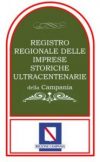1870
IN THE 1910s
IN THE 1920s
IN THE 1930s/h4>
IN THE 1950s
IN THE 1960s
FROM THE 80s TO TODAY
ESSENTIAL BIBLIOGRAPHY
G. Donatone, “La Ceramica di Vietri dalle origini all’800”, CO.BE.CAM, 1991
A. Tesauro, “Maestri creatari e faenzari a Vietri tra cinquecento e seicento” – Pietro Laveglia Editore, 1991
M. A. Iannelli, A. Tesauro, S. Milano, ”La faenzera nelle terme romane a Vietri : il ritrovamento alla Bagnara e la produzione ceramica vietrese del sec. XIX” – Edizioni Menabò, 1994
Amministrazione Provinciale di Salerno, “Il Museo della Ceramica – Raito di Vietri sul Mare “ – Edizioni 10/17, 1994
A. Tesauro, “Le faenzere di Vietri nel Settecento: un significativo ruolo nella produzione ceramica nel Regno di Napoli” – Centro Sudi Salernitani “Raffaele Guariglia”, 2004
V. Pinto, “Giovannino, ceramista vietrese”, De Luca Editore, 1997.
C.Bonasi, A. Dura, “La presenza e la produzione dei maestri olandesi a Vietri sul mare”, Puracultura, 2017.
R. D’Andria, R. Fatigati, R.Nicolò, C. Bonasi, “Franchini”, Puracultura, 2019.

